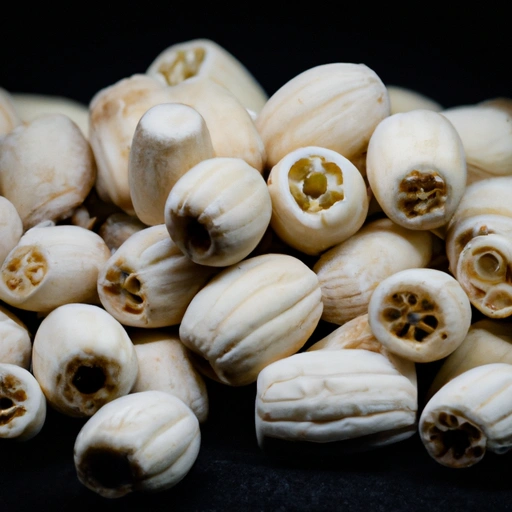Lotus Seed
Description

Lotus seeds, often referred to as lotus nuts, are the endosperm of the seeds from the lotus plant (Nelumbo nucifera). The lotus plant is revered in many cultures and its seeds are valued for their versatility and nutritional content. These small, round seeds can be found inside the water caltrop, resembling large, dark pits. Once extracted and dried, they are commonly used in a variety of dishes around the world. Lotus seeds can be found in both fresh and dried forms, making them a flexible ingredient for various culinary applications.
Common uses
Lotus seeds are commonly used in a variety of sweet and savory dishes. They can be eaten as a snack, boiled, ground into flour, or popped like popcorn. In Asian cuisine, they are often seen in desserts, soups, and traditional medicinal concoctions. Outside of Asia, lotus seeds are gaining popularity as a health food and are incorporated into various dishes for their unique texture and flavor.
Nutritional value
Calories
Lotus seeds contain approximately 89 calories per ounce (28 grams or about 2 tablespoons).
Protein
They offer around 4 grams of protein per ounce, making them a good plant-based protein source.
Fat
With about 0.5 grams of fat per ounce, lotus seeds are considered low in fat.
Carbohydrates
These seeds provide around 17 grams of carbohydrates per ounce.
Vitamins
Lotus seeds are a good source of B-vitamins, particularly thiamin (B1) and niacin (B3).
Minerals
They are rich in minerals like manganese, phosphorus, potassium, and magnesium.
Health benefits
Lotus seeds are believed to have several health benefits. They are said to help with insomnia, regulate blood pressure, and promote heart health due to their magnesium content. The seeds are also thought to have calming properties, aiding in stress relief and potentially benefiting the nervous system.
Potential risks
While lotus seeds are generally considered safe for most people, they should be consumed in moderation. Overconsumption may lead to unwanted gastrointestinal effects due to their high fiber content. People with known allergies to nuts or similar products should also exercise caution.
Common recipes
Lotus seeds are featured in recipes such as Chinese sweet lotus seed soup, Indian makhana kheer, and Japanese lotus seed paste used in confections like mochi.
Cooking methods
They can be boiled, roasted, or ground into flour. Puffed lotus seeds, known as makhana in India, are made by roasting and are a popular snack.
Pairing with other ingredients
Lotus seeds pair well with ingredients like coconut milk, red beans, rice, and various spices. They can also complement sweet dishes with fruits such as lychee, longan, and dates.
Summary
Lotus seeds are a nutritious and versatile ingredient with a long history of use in Asian cultures. Their unique texture and health benefits make them a valuable addition to various culinary traditions. With growing interest in plant-based and gluten-free diets, lotus seeds are finding their way into a wider range of recipes and cuisines globally.